
A dauntless man of the people with solid moral principles
By Ursula Volwiler und Markus Ganser
This article provides a glimpse of the world Sebastian Ganser, a native of
Laupheim, lived in from the beginning of the 1920s until the post-war years of
the past century. In particular, the article focuses on his grappling with
national socialism and his social interactions with Jewish fellow residents in
Laupheim.
Farmer and Member of the State
Parliament
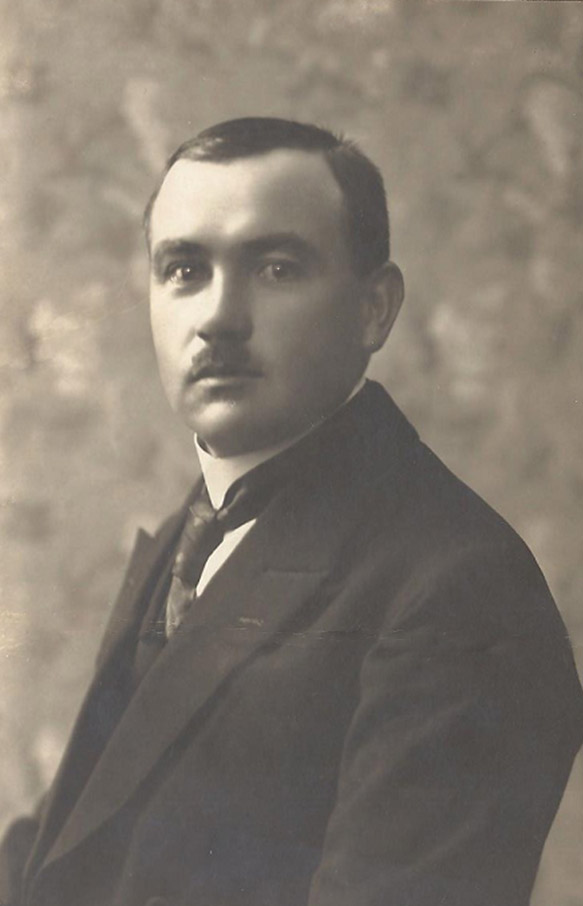
- - October 12, 1882 to July 8, 1957
-
-
Married to Kreszenz Ganser, née Hegerle (1887-1960),
The
couple’s children:
-
-
Franz (1919-1992)
-
-
Theresia (1921-2002)
- - Sebastian jun.
(1921 – gef. 1945)
- - Antonie (1922
- 2017)
- - Eugen (1923-
1969)
- - Eleonore (1928-1999)
-
Josef (1929-2005)
Before 1933
Born in Laupheim, Sebastian Ganser completed vocational training at the
agricultural college in Hohenheim and, following his graduation, ran the family
farm in Laupheim. The property was located on 36 Mittelstrasse. Ganser – known
around town as Bäuerles Baschde – was co-founder of the dairy cooperative in
Laupheim and managed the local agricultural purchasing and marketing cooperative
between 1919 and 1922.
Strongly influenced by his Catholic faith, Ganser was also a representative of
the German Center Party (Zentrumspartei) in the Württemberg Parliament between
1920 and 1924. In addition, he was a member of Laupheim’s city council. He took
as a matter of course that a functioning community relied on an equal
partnership between Christians and Jews. Accordingly, he maintained friendly
ties with many fellow residents who were Jewish, such as the family of Max
Obernauer1.
|
Ganser’s wife Kreszenz was a regular client at Hofheimer’s Clothing
and Linen Store, a Jewish business. One day, when she did not have
enough money to pay for her purchases, Mrs. Hofheimer offered this
simple suggestion: “Just bring a few eggs then!”
2
|
Of course, this seemingly banal incident does not fully represent
the social atmosphere in Laupheim before 1933, and yet it
illustrates based on a specific case the uncomplicated interaction
between people in Laupheim, with practically no regard as to whether
somebody was Jew or Christian.
|
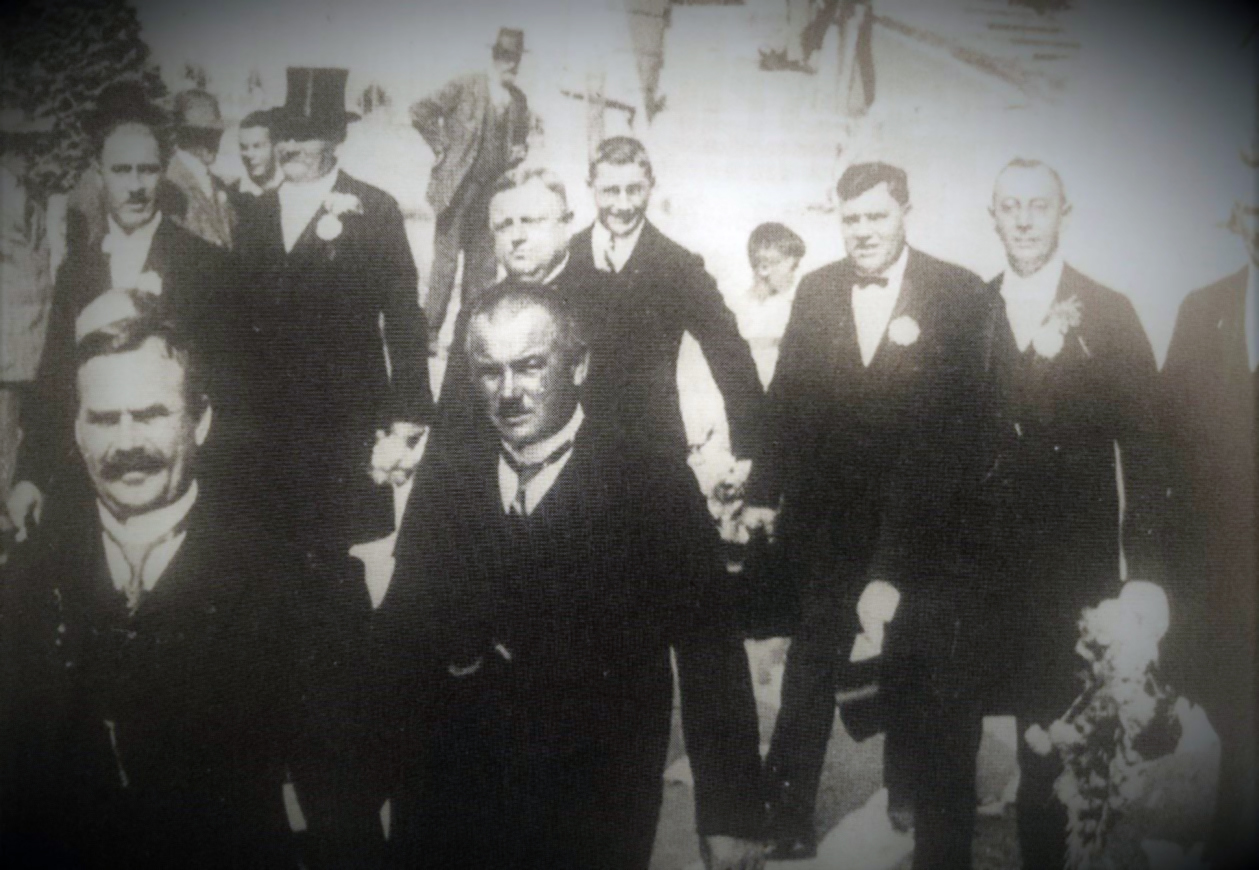
Events in Laupheim after 1933
Even after the National Socialists had seized power, Ganser held on to his
attitude and “consistently maintained good relations with Jewish families after
1933.”
3
Sebastian
Ganser’s daughter Antonie remembers well that Obernauer and Ganser regularly met
at Ganser's place, but after 1933 they had to be cautious, resorting to the back
door entrance for their visits. She also recalls Obernauer hiding behind the
kitchen door when uninvited guests were knocking at the door.
SA-members (Translator’s
note: SA = Sturmabteilung, the paramilitary wing of the Nazi Party) and their
supporters repeatedly directed acts of nighttime aggression at the Ganser
farmstead on 36 Mittelstrasse (then
renamed to Adolf-Hitler-Strasse), smashing windows and defacing walls with
graffiti, while yelling threats. Antonie
also
relates a
childhood memory according to which she was called a “black
dog” and beaten up
in school. (Translator’s note: The term “black
dog” was meant to denounce her
family’s affiliation with a different party and opposition to National
Socialism, symbolized by the color brown.) In another incident during that time,
also historically documented, Ganser openly showed his aversion to an SA parade
on Mittelstrasse by spontaneously hitching his manure cart, setting out to
fertilize his fields and literally raining on the SA parade.4
"My father always had one foot in the KZ, because he always stood up for what he believed. He never danced to the tune of the Nazis"5.
An NS Victim in the Family
Verbal attacks by Nazis and their followers were one thing; another matter
altogether was how the National Socialist regime showed its barbarous world view
to the Ganser family firsthand: Augustin Ganser, Sebastian’s elder brother, was
mentally handicapped and cared for over several years at a residential treatment
facility in Heggbach. In the course of the systematic extermination of mentally
handicapped people at the hands of the Nazi regime (Aktion
T4)
he was taken away from Heggbach as part of a cloak-and-dagger collective
transport and immediately killed at
Grafeneck
Castle. According to archived information at the documentation center of
Grafeneck memorial, this happened on September 11, 1940.6
Sebastian
Ganser’s daughter Antonie remembers well the gloomy day when the unsuspecting
family received a letter from Grafeneck containing a formal note about the
“unexpected death” of their family member.7
The Situation of Jewish Residents
After 1933, discrimination against the Jewish population of Laupheim became the
norm. Amid forced expropriations many long-established Jewish families soon came
to the conclusion that fleeing their homeland was the only remaining
alternative; whoever was able to emigrate, did so. Most of the older Jewish
residents who stayed in Laupheim and who were confined in collective housing in
Wendelinsgrube or the former rabbinate, on the other hand, faced deportation and
death.
Ganser reportedly helped Jewish families flee. As a horse-drawn hearse driver he
took care of transporting deceased persons in Laupheim. Repeatedly he set out
beyond the district boundaries when somebody had died in Heggbach or
Dellmensingen, where Jews were forced to stay in camps.8
At the very
least, he thus ensured the dignified burial of these victims of Nazism at the
Jewish cemetery in Laupheim.9
As a result of his defiant behavior he was picked up and interrogated on several
occasions, but managed to make it to the end of the war with nothing more than
verbal threats.
|
One anecdote illustrates why Sebastian Ganser suffered no more than verbal threats in his community: He was quick-witted and usually had enough evidence against those who denounced him. For instance, a resident of Laupheim loyal to the party accused him of illicitly slaughtering farm animals and threatened to notify the police. Ganser took the wind out of his sails by saying: “Sure, and you came and stuffed your face each time, that’s why you know about it so well.” 10
|
Post-War Years
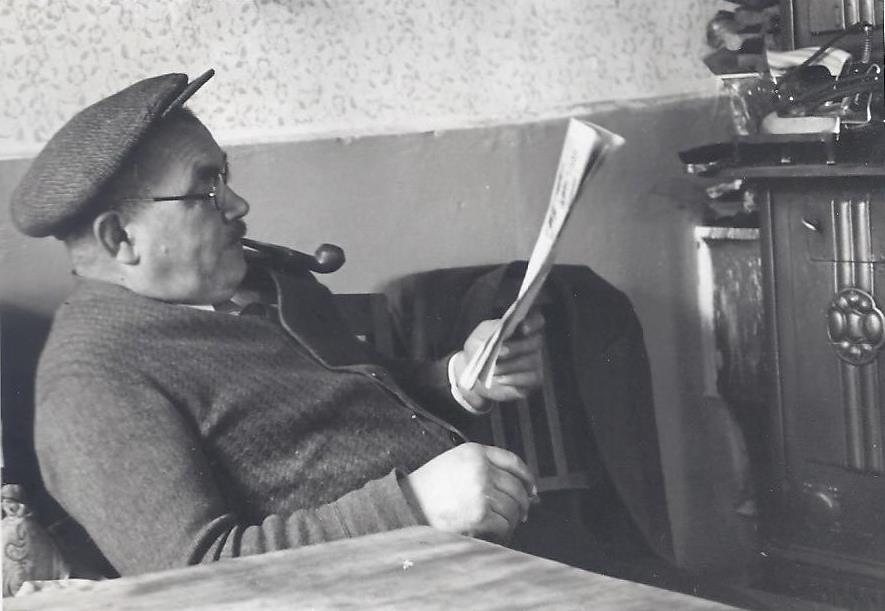 Another
historically documented event took place in the early post-war years, when a
large American limousine with foreign license plates stopped in front of the
Ganser property on 36 Mittelstrasse. Helmut Steiner, born in Laupheim, got out
of the car in order to thank Sebastian Ganser for what he had done on behalf of
the Jewish residents in Laupheim.
Helmut Steiner had emigrated to Switzerland with his family in 1936.
11
Another
historically documented event took place in the early post-war years, when a
large American limousine with foreign license plates stopped in front of the
Ganser property on 36 Mittelstrasse. Helmut Steiner, born in Laupheim, got out
of the car in order to thank Sebastian Ganser for what he had done on behalf of
the Jewish residents in Laupheim.
Helmut Steiner had emigrated to Switzerland with his family in 1936.
11
After the Second World War, Ganser was a founding member of the CDU
(Translator’s Note: Christian Democratic Union party) in Laupheim and its
chairman until 1953. Between
1946 and 1948, he was again a member of the Laupheim city council. In addition,
he was a member of the state parliament of Württemberg-Hohenzollern from 1947 to
1952. . Sebastian Ganser was
also well-known for his sense of humor and verbal wit.12 „In
agricultural circles he was esteemed as an open-minded mentor and he always
shared with the public his vast life experiences.” He is described as a
„man of stately appearance, politically astute and humorous, who was able to
elicit occasional laughter during an assembly with his strong voice.”
13
He
excused his occasional absence from parliament in polished High
German as follows: „While my colleagues in Parliament make laws, I must remain
at home, tend my fields and spray ‘Saich’.”
14
(Translator’s note: The word Saich is dialect for liquid manure, which in proper
German is called Jauche or Gülle)
Sebastian Ganser died on July 8, 1957 at the age of 74.
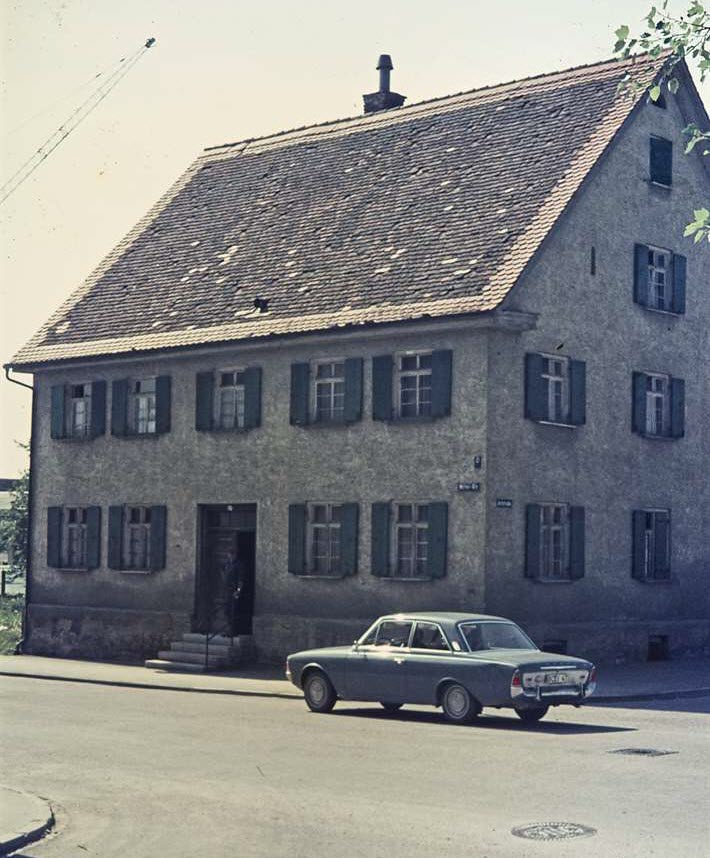 |
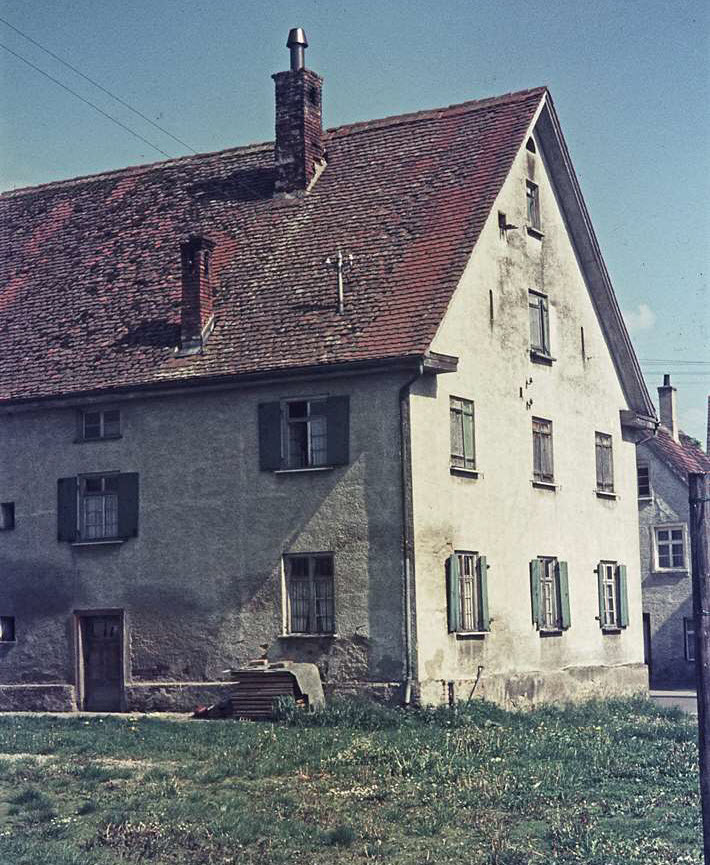 |
|
The Ganser residence (36 Mittelstrasse) in the 60s Left picture: view from Anna-von-Freyberg School |
Right picture: View of building from Schmidstrasse;
torn down in the early 80s. |
[1] see:
Emmerich, Rolf: Kehillah Laupheimer Spuren. Stuttgart und Laupheim. 2012.
ISBN 978-3-933726-44-5. (pages 165-166); (Details about the family of Max
Obernauer in „Die jüdische Gemeinde in Laupheim und ihre Zerstörung“. 2013.
ISBN 978-3-00-025702-5 or online edition at http://www.gedenk-buch.de/KAPITEL/71%20OBERNAUER%20Max.htm)
[2] as
told by Eleonore Ganser, daughter of Sebastian Ganser; details about the
Hofheimer family in „Die jüdische Gemeinde in Laupheim und ihre Zerstörung“.
2013. ISBN 978-3-00-025702-5 or online edition at
http://www.gedenk-buch.de/KAPITEL/50e%20HOFHEIMER%20Clara.htm)
[3] see
1
[4]
as remembered by Antonie Seeberger, daughter of Sebastian Ganser (interview from
2010)
[6] written
information by the documentation center of Grafeneck memorial, dated August 5,
2016
[7] further
information about formalized condolence letters from Grafeneck at https://grafeneck.finalnet.de/letter.php
[8] These
collective housing camps were nothing more than stopovers for dispossessed and
displaced Jews, who were later deported to concentration camps in Eastern
Europe.
In this context, also see the Wikipedia post about 11. Verordnung zum
Reichsbürgergesetz vom 25. 11. 1941.
This regulation was used by National Socialists as an arbitrary judiciary tool
to legitimize the expropriation of emigrated Jews, and later the expropriation
of deported Jews.
[9] as
remembered by Antonie Seeberger, neé Ganser; see also: Emmerich, Rolf:
Kehillah Laupheimer Spuren. Stuttgart und Laupheim.
2012. ISBN 978-3-933726-44-5. (pages 165-166); the names of all victims of
Nazism from the collective housing camps in Heggbach and Dellmensingen buried at
the Jewisn Cemetery in Laupheim are listed in Nathanja Hüttenmeister: Der
jüdische Friedhof Laupheim. 1998. ISBN 3-00-003527-3 (pages 521-529); re. the
biography of Frida Dettelbacher, who was forcibly relocated to and died in a
nursing home in Dellmensingen and is buried at the Jewish Cemetery, see Webseite
der Initiative Stolpersteine Göppingen e.V. at http://www.stolpersteine-gp.de/?page_id=1117
[10] as
remembered by Antonie Seeberger, neé Ganser
[11] as
remembered by Antonie Seeberger, neé Ganser (Interview from 2010); details about
the Steiner family in „Die jüdische Gemeinde in Laupheim und ihre Zerstörung“.
2013. ISBN 978-3-00-025702-5; details about the Steiner family in „Die
jüdische Gemeinde in Laupheim und ihre Zerstörung“. 2013.
ISBN 978-3-00-025702-5 or online edition at http://www.gedenk-buch.de/KAPITEL/84%20STEINER%20SIMON.htm)
[13] Article
in Schwäbische Zeitung from July 19, 1957, also printed in CDU Stadtverband
Laupheim: Festschrift 50 Jahre 1946 – 1996
[14] from:
CDU Stadtverband Laupheim: Festschrift 50 Jahre 1946 – 1996
[15] cited
from: Grötzinger, Marlies: Laupheimer Anekdoten & Originale. 1997. ISBN
300000954x. (pages 25-26), also mentioned in Eß, Robert: Bilderbuch
Alt-Laupheim, Laupheim 2015.
(p. 136)